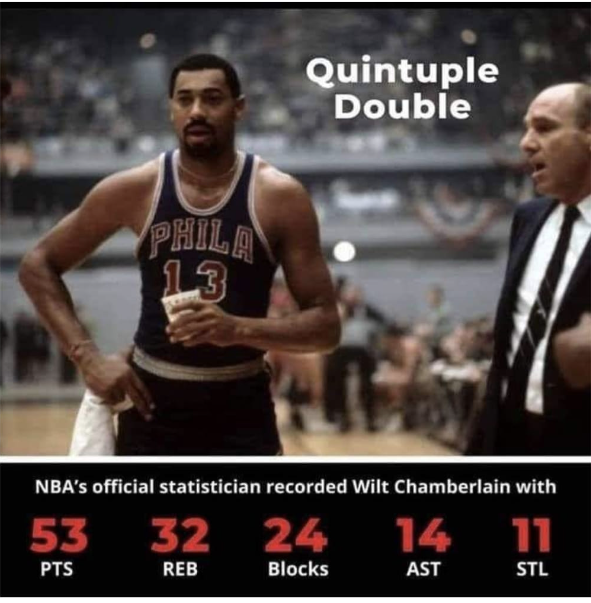
Larry Bird and Wilt Chamberlain are two of the most iconic figures in NBA history, each leaving an indelible mark on the game. While they played in different eras and had distinct playing styles, comparing their stats provides insight into their contributions to basketball. This article explores their career statistics, playing styles, and overall impact on the game.

Career Overview
**Larry Bird**
– **Position:** Small Forward / Power Forward
– **Teams:** Boston Celtics (1979–1992)
– **NBA Championships:** 3 (1981, 1984, 1986)
– **MVP Awards:** 3 (1984, 1985, 1986)
– **All-Star Appearances:** 12
**Wilt Chamberlain**
– **Position:** Center
– **Teams:** Philadelphia/San Francisco Warriors (1959–1965), Philadelphia 76ers (1965–1968), Los Angeles Lakers (1968–1973)
– **NBA Championships:** 2 (1967, 1972)
– **MVP Awards:** 4 (1960, 1966, 1967, 1968)
– **All-Star Appearances:** 13
#### Career Statistics
To compare Bird and Chamberlain effectively, let’s examine key statistical categories from their careers.
**Scoring:**
– **Larry Bird:**
– Points Per Game (PPG): 24.3
– Field Goal Percentage (FG%): 49.6%
– Three-Point Percentage (3P%): 37.6%
– **Wilt Chamberlain:**
– Points Per Game (PPG): 31.4
– Field Goal Percentage (FG%): 54.0%
– Three-Point Percentage (3P%): 11.0% (limited attempts)
**Rebounding:**
– **Larry Bird:**
– Rebounds Per Game (RPG): 10.0
– **Wilt Chamberlain:**
– Rebounds Per Game (RPG): 22.9
**Assists:**
– **Larry Bird:**
– Assists Per Game (APG): 6.3
– **Wilt Chamberlain:**
– Assists Per Game (APG): 4.4
**Steals and Blocks:**
– **Larry Bird:**
– Steals Per Game (SPG): 1.7
– Blocks Per Game (BPG): 0.8
– **Wilt Chamberlain:**
– Steals Per Game (SPG): 0.4 (steals were not officially recorded during his career)
– Blocks Per Game (BPG): 8.6 (blocks were not officially recorded during his career, but estimates are available)
#### Playing Styles
**Larry Bird**
Bird was known for his incredible shooting ability, basketball IQ, and competitiveness. He could score from anywhere on the court and was particularly effective in clutch situations. His versatility allowed him to play both forward positions, and he excelled in playmaking, often leading his team in assists. Bird was also a fierce defender, known for his tenacity and ability to read the game.

**Wilt Chamberlain**
Chamberlain was a dominant physical presence in the paint, unmatched in scoring and rebounding. His strength and size allowed him to overpower opponents, and he set numerous records, including the famous 100-point game. Wilt was not only a prolific scorer but also an exceptional rebounder and shot-blocker. His playing style revolved around dominating the interior, but he also showcased surprising agility for a player of his size.
#### Legacy and Impact
**Larry Bird**
Bird’s impact on the game goes beyond statistics. He played a crucial role in revitalizing the NBA during the 1980s, famously competing against Magic Johnson in a rivalry that defined the league. Bird’s work ethic, leadership, and clutch performances made him a role model for future generations. His contributions to team play and his ability to elevate his teammates’ performances are hallmarks of his legacy.
**Wilt Chamberlain**
Chamberlain’s records remain some of the most impressive in sports history. He revolutionized the center position and set the standard for scoring and rebounding that many players aspire to. Wilt’s athleticism and skill level changed perceptions of what a big man could do in basketball. His dominance on the court and his larger-than-life personality contributed significantly to the popularity of the NBA.
#### Conclusion
Both Larry Bird and Wilt Chamberlain are legends of the game, each excelling in their respective roles and eras. While Bird was the quintessential team player with extraordinary shooting and playmaking skills, Chamberlain was a dominant force whose scoring and rebounding capabilities set records that still stand today.
Ultimately, comparing their statistics provides a glimpse into their greatness, but their true legacies are defined by their impact on the game, their influence on future players, and their unforgettable contributions to basketball history.







